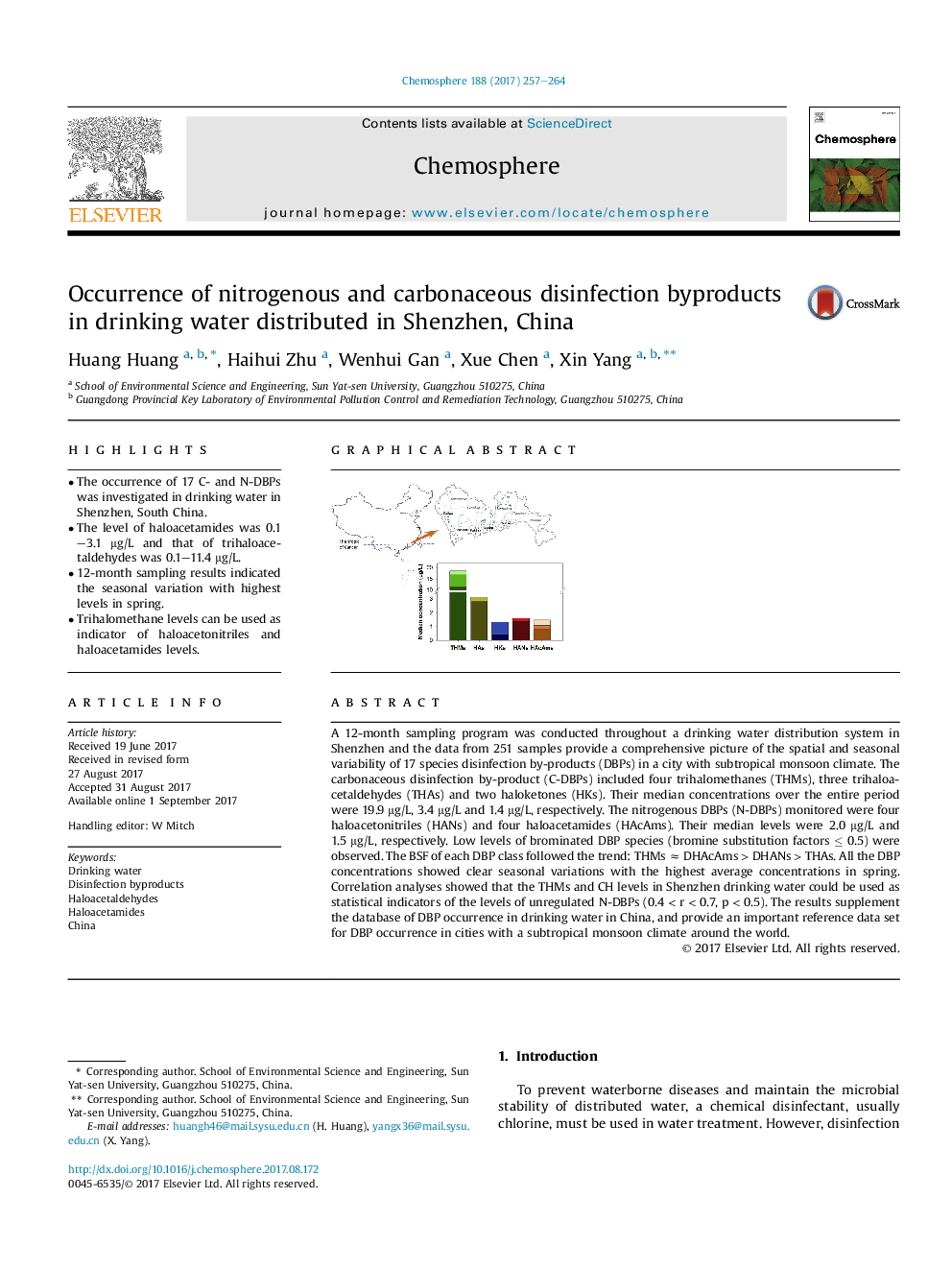| Article ID | Journal | Published Year | Pages | File Type |
|---|---|---|---|---|
| 5745809 | Chemosphere | 2017 | 8 Pages |
â¢The occurrence of 17 C- and N-DBPs was investigated in drinking water in Shenzhen, South China.â¢The level of haloacetamides was 0.1-3.1 μg/L and that of trihaloacetaldehydes was 0.1-11.4 μg/L.â¢12-month sampling results indicated the seasonal variation with highest levels in spring.â¢Trihalomethane levels can be used as indicator of haloacetonitriles and haloacetamides levels.
A 12-month sampling program was conducted throughout a drinking water distribution system in Shenzhen and the data from 251 samples provide a comprehensive picture of the spatial and seasonal variability of 17 species disinfection by-products (DBPs) in a city with subtropical monsoon climate. The carbonaceous disinfection by-product (C-DBPs) included four trihalomethanes (THMs), three trihaloacetaldehydes (THAs) and two haloketones (HKs). Their median concentrations over the entire period were 19.9 μg/L, 3.4 μg/L and 1.4 μg/L, respectively. The nitrogenous DBPs (N-DBPs) monitored were four haloacetonitriles (HANs) and four haloacetamides (HAcAms). Their median levels were 2.0 μg/L and 1.5 μg/L, respectively. Low levels of brominated DBP species (bromine substitution factors â¤Â 0.5) were observed. The BSF of each DBP class followed the trend: THMs â DHAcAms > DHANs > THAs. All the DBP concentrations showed clear seasonal variations with the highest average concentrations in spring. Correlation analyses showed that the THMs and CH levels in Shenzhen drinking water could be used as statistical indicators of the levels of unregulated N-DBPs (0.4 < r < 0.7, p < 0.5). The results supplement the database of DBP occurrence in drinking water in China, and provide an important reference data set for DBP occurrence in cities with a subtropical monsoon climate around the world.
Graphical abstractDownload high-res image (154KB)Download full-size image
